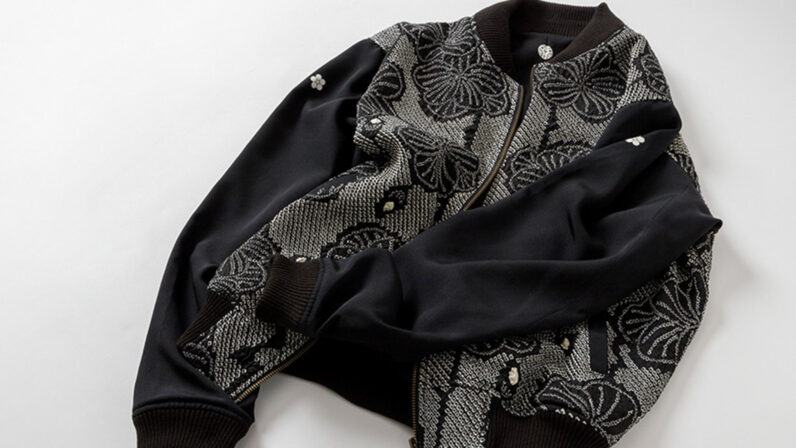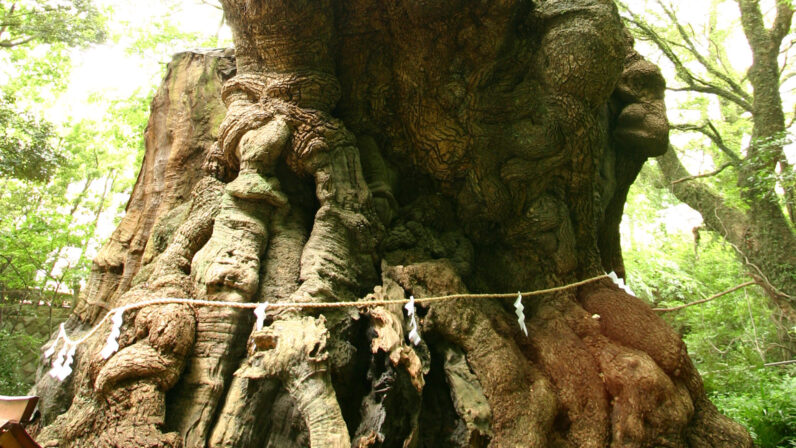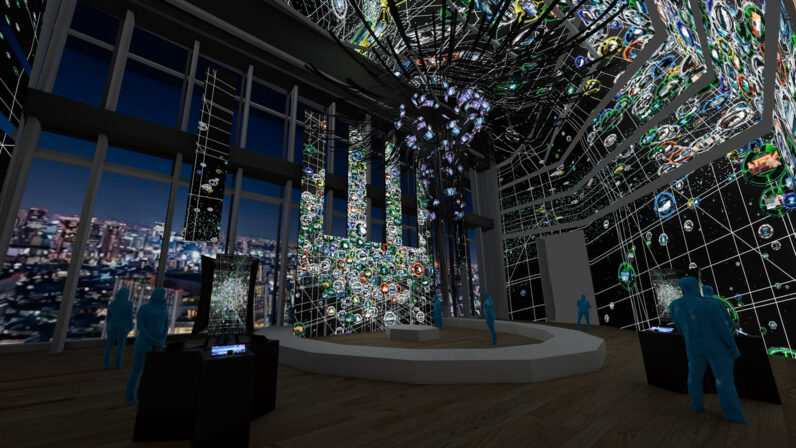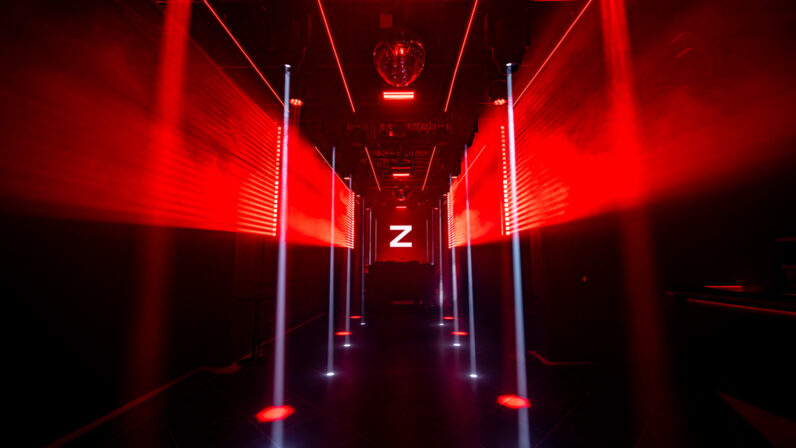Cho Kabuki, which renowned Kabuki actor Shidō Nakamura brought to life after declaring it his personal mission, debuted at the iconic Kabukiza Theater in December 2023.
Cho Kabuki’s beginnings date back to the 2016 cross-cultural event Nico Nico Chokaigi, where it gained attention largely because of Shidō’s collaboration with virtual singer Hatsune Miku. Since then, the show has been performed many times and has garnered support from people of all generations, with a successful run at Kyoto’s Minamiza Theater in 2019 and performances at theaters in four cities nationwide in 2022.
What makes Cho Kabuki so compelling that it leaves audiences wanting to see it again?

Cho Kabuki Powered by NTT Hanakurabe Senbonzakura
A new genre of Kabuki in collaboration with Hatsune Miku
Cho Kabuki is a new genre of Kabuki that merges the traditionally analog Kabuki with cutting-edge technology, including innovations developed by NTT. In 2016, Hanakurabe Senbonzakura was performed for the first time as Cho Kabuki. This play was inspired by the world of Yoshitsune Senbonzakura (Yoshitsune and the Thousand Cherry Trees)—one of the three great Kabuki adaptations of Kyogen silent plays—and the hit song Senbonzakura by virtual singer Hatsune Miku. This new style of Kabuki delighted both Kabuki fans, through the character Kitsune Tadanobu from Yoshitsune Senbonzakura, and Hatsune Miku fans, through the then popular song Senbonzakura.
Integrating dances and performances by live actors and virtual singers was a major challenge, and Shidō himself said that at first it was difficult to coordinate where each performer would stand, how dance numbers and tachimawari (sword-fighting scenes) would be choreographed, how dialogue would be timed, and so on. Since then, the technology has evolved and Shidō has gained more experience, so that now, the acting is exquisite and the production spectacular and mesmerizing with no sign of past difficulties.

From left : Princess Miku (Hatsune Miku), Sato Shirobei Tadanobu (Shidō Nakamura)
©Shochiku Co., Ltd. / Cho Kabuki Powered by NTT Hanakurabe Senbonzakura
This original version of Hanakurabe Senbonzakura ended its run at the Kabukiza Theater on December 26, 2023. Every day, the theater was packed with Kabuki fans and ardent Hatsune Miku fans wearing happi coats with her image printed on them. Audience members held glow sticks that illuminated the entire venue in colors representing each performer—red for Shidō Nakamura and green for Hatsune Miku, and so on—thus creating a spectacle never before seen in traditional Kabuki plays. Incidentally, Kankuro Nakamura, in his Cho Kabuki debut, was represented by the colors white and sky blue, while Shichinosuke Nakamura was represented by yellow, which was inspired by the color of the Nakamura Kabuki clan’s kamishimo (formal samurai clothing).
Reviving the spirit of the Edo period in modern times
The show begins with the traditional kojo greeting, in which Shidō, dressed in Kabuki attire, welcomes the audience, eliciting shouts from the crowd, known as omuko. During this introduction, Shidō gives a lecture on how best to enjoy Cho Kabuki.
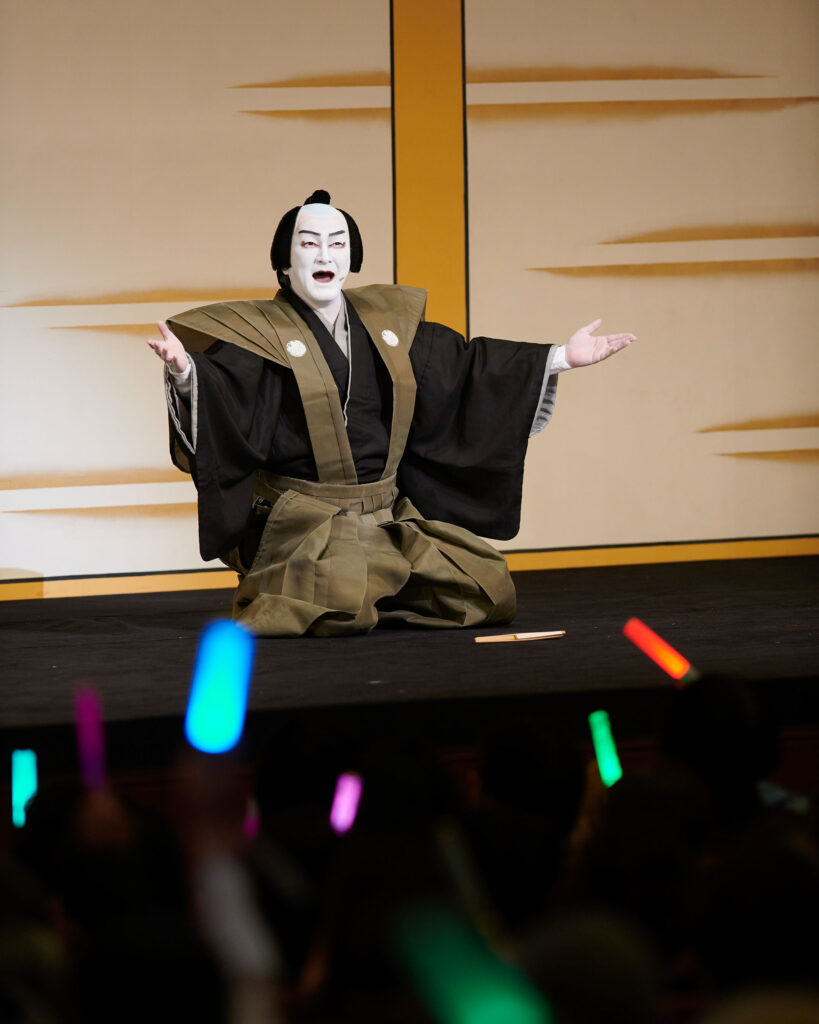
Cho Kabuki Powered by NTT Hanakurabe Senbonzakura
When members of the audience call out to the actors on stage, they use the actors’ yago(guild name). Shidō is referred to as Yorozuya, Hatsune Miku as Hatsune-ya, NTT as Denwa-ya (denwa=telephone), and so on. During regular performances at the Kabukiza Theater, omuko experts call out from the back of the third-floor seating area at appropriate moments in the play. Notably, the glow sticks sold at the Kabukiza have an omuko function, which when turned on, enables the glow stick to emit a shout of ‘Yorozuya!’or other yago. This is a welcome feature for those who are reluctant to call out themselves, and it has greatly lowered the barrier to participation as omuko.
The audience, with their colorfully illuminated glow sticks and role as lively omuko, is an important element of Cho Kabuki performances. The crowd not only applauds the performances but also encourages the actors. This effect creates a sense of unity between actors and audience. Perhaps this atmosphere existed in the playhouses of the Edo period, and today’s audiences can get a sense of what that was like.
During the second part of the kojo, NTT’s AI-generated Shidō Twin appears, speaking fluent English. Collaborator Hatsune Miku, dressed in Kabuki attire, also joins in and delivers greetings. Such virtual characters, created with cutting-edge technology, may become traditions themselves a hundred years from now. Expectations of this are growing.
In the next act, the story begins with a classical Kabuki performance set in ancient times when one thousand cherry blossom trees are in full bloom. Although the White Fox, who protects these sacred trees, and Princess Miku face hardships as a result of an attack by the Azure Dragon, who seeks to dominate this world and plunge it into darkness, they manage to escape. The scene shifts to a world a thousand years later. Princess Miku, who has lost her memory and has temporarily transformed into a butterfly, flies around the one thousand blooming cherry blossom trees, while the White Fox appears, reincarnated as Tadanobu Sato. The two are reunited, and Tadanobu decides to confront the Azure Dragon’s avatar in an attempt to avenge the attack of a millennium ago.
The performances of Hatsune Miku as Princess Miku and Shidō as Tadanobu are impeccably synchronized. The video in the background during Tadanobu’s dynamic sword-fighting scenes enhances the scale and dynamism of the performance. As the story progresses, the excitement grows.


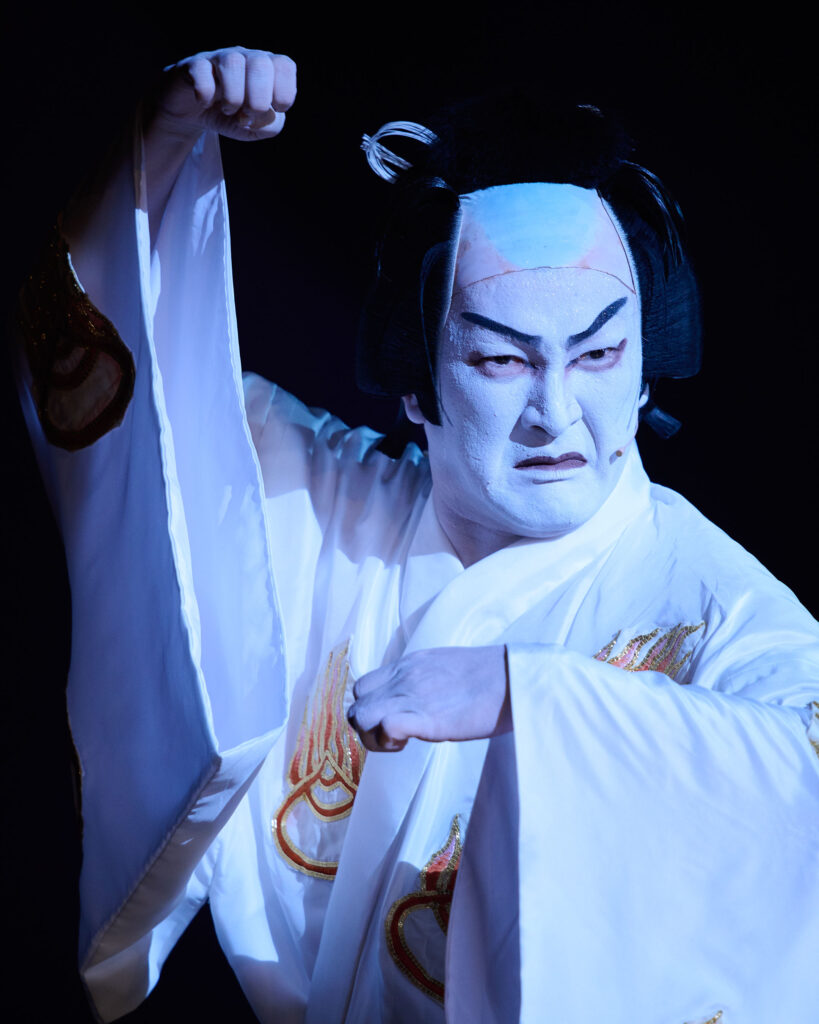
Cho Kabuki Powered by NTT Hanakurabe Senbonzakura
Shido’s disciples and two sons will usher Kabuki into the future
The common perception is that Kabuki acting is an inherited profession passed down through generations within a Kabuki actor’s family. However, the Kabuki Actor Training Center at the National Theatre of Japan trains actors, who upon graduation, become disciples of Kabuki actors, which paves their way to becoming full-fledged Kabuki actors themselves. Not only do these disciples play supporting roles, but they also take on the crucial role of kurogo (stagehands dressed in black), assisting their masters when they appear on stage. In Cho Kabuki, these apprentices are given the opportunity to perform in leading roles.
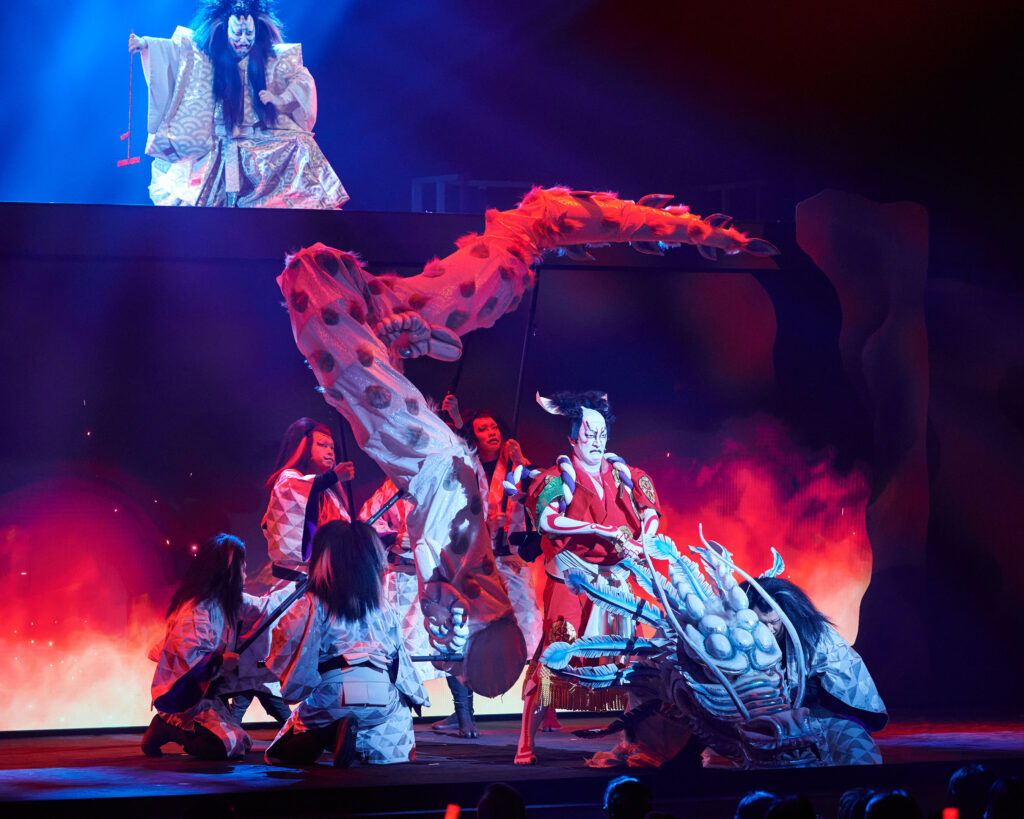
Cho Kabuki Powered by NTT Hanakurabe Senbonzakura
In the adaptation of Hanakurabe Senbonzakura, Choshi Nakamura plays the role of Hatsune no Mae, while Kuniya Sawamura portrays the Spirit of the Azure Dragon. It’s a rare occurrence in Kabuki to see the names of disciples listed alongside those of the main cast in promotional materials. This is one way Shidō conveys his belief that talented young people should have a place to explore their potential.
The production at the Kabukiza Theater in December marked the Cho Kabuki debut of popular Kabuki actors Kankuro and Shichinosuke Nakamura. As a condition of their participation in the show, they asked that their protégés not be relegated to lesser roles because of the brothers’ involvement in the performance. This spirit of collaboration and equality is crucial when pioneering a new genre.The protégés were able to skillfully display their talent and innate appeal by performing on stage. People witnessing their performance, such as Choshi and Kuniya, surely discovered new facets of their charm.
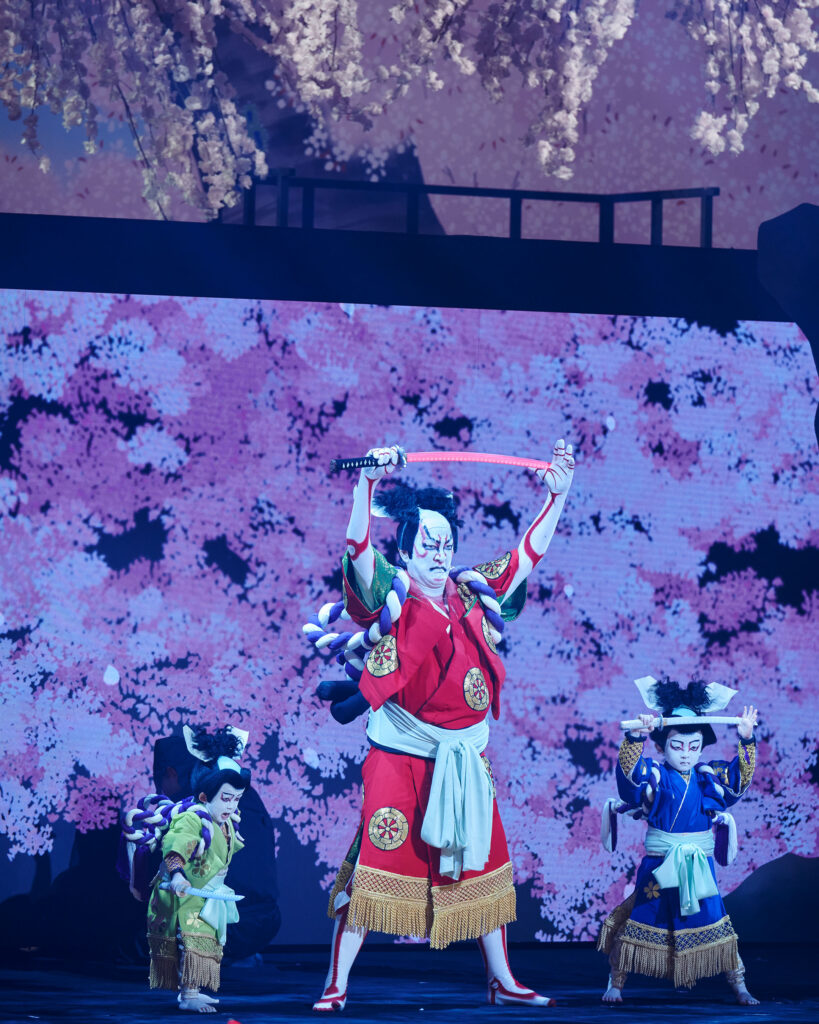
Cho Kabuki Powered by NTT Hanakurabe Senbonzakura
Then, there was the much-anticipated appearance of Shidō’s two sons: his eldest son, Haruki, as Haruo Maru, and his second son, Natsuki, as Natsuo Maru. Their confident stride down the hanamichi, exhibiting no sign of trepidation, captivated the audience of around 2,000 people. Haruki masterfully played the Spirit of the Fox, retreating along the hanamichi while performing roppo, while Natsuki performed mie for the first time, executing the ceremonial poses alongside his father and brother. This father-son collaboration will be etched into the hearts of the audience and become a priceless moment in the boys’ future development as Kabuki actors. Although still child actors, Haruki and Natsuki will eventually ascend to pivotal roles, a highly anticipated development. Witnessing the evolution of these young actors over time and discovering new facets of their allure adds another layer to the enjoyment of Kabuki.
Cho Kabuki: A live show where you can experience a sense of unity
At the climax, Shidō, dressed as Tadanobu, takes the stage holding a glow stick in each hand and proceeds to rouse the audience. This moment has become a trademark of Cho Kabuki. For music, traditional Kabuki primarily features live performances of gidayu-bushi (music used in Japanese puppet theater), nagauta (a basic lyric musical accompaniment of Kabuki), and ohayashi (musical accompaniment by a group of musicians)—thereby providing a live-concert experience that allows the audience to revel in the authentic sound of voices and instruments. But Cho Kabuki goes further by also incorporating Japanese taiko drums and the music of Hatsune Miku for an extraordinarily uplifting experience.

From left: Princess Miku (Hatsune Miku), Sato Shirobei Tadanobu (Shidō Nakamura)
©Shochiku Co., Ltd. / Cho Kabuki Powered by NTT Hanakurabe Senbonzakura
The final highlight is the chūnori aerial performance, in which Shidō and Hatsune Miku soar above the audience on a large kite suspended by wires. As the two float through the air, flower petals rain down from above. Flying from the hanamichi to the third-floor seating area, the performers call out to the audience on the upper level, while the other performers send them off by waving glow sticks. The joyful atmosphere, felt by performers and audience alike, filled the Kabukiza Theater. Even after the curtain fell, the audience continued to applaud enthusiastically.
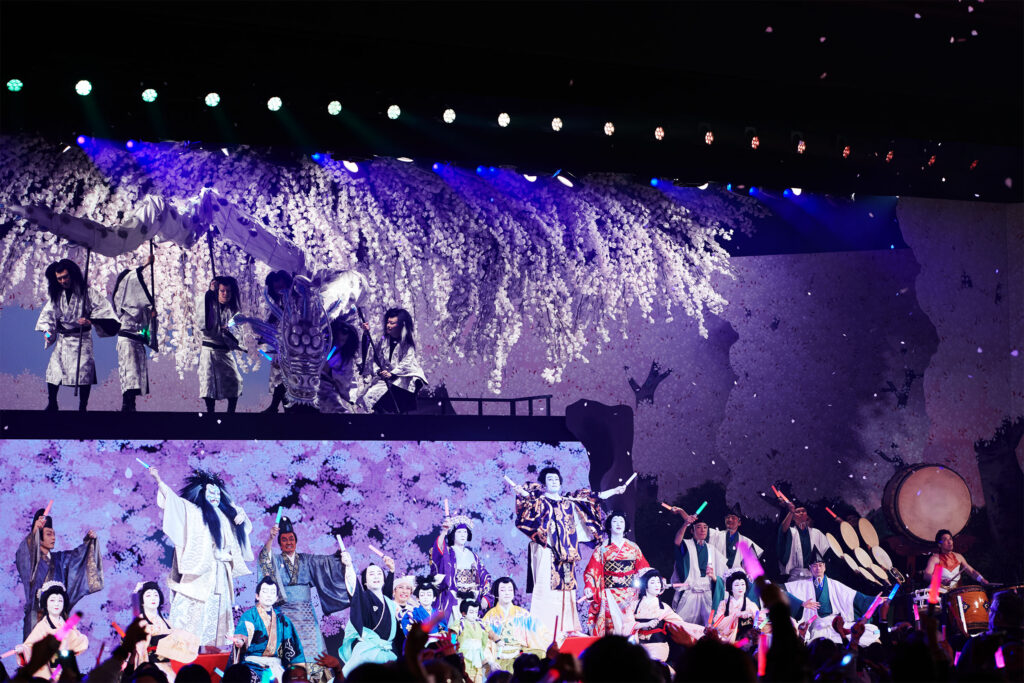
Cho Kabuki Powered by NTT Hanakurabe Senbonzakura
Kabuki is not about knowledge or logic; it’s a sensory experience. And Cho Kabuki teaches us this.. Although it may seem new and innovative at first glance, Cho Kabuki is a play that allows the audience to experience the enthusiasm of the people of the Edo period and to appreciate firsthand the origins of kabuki.
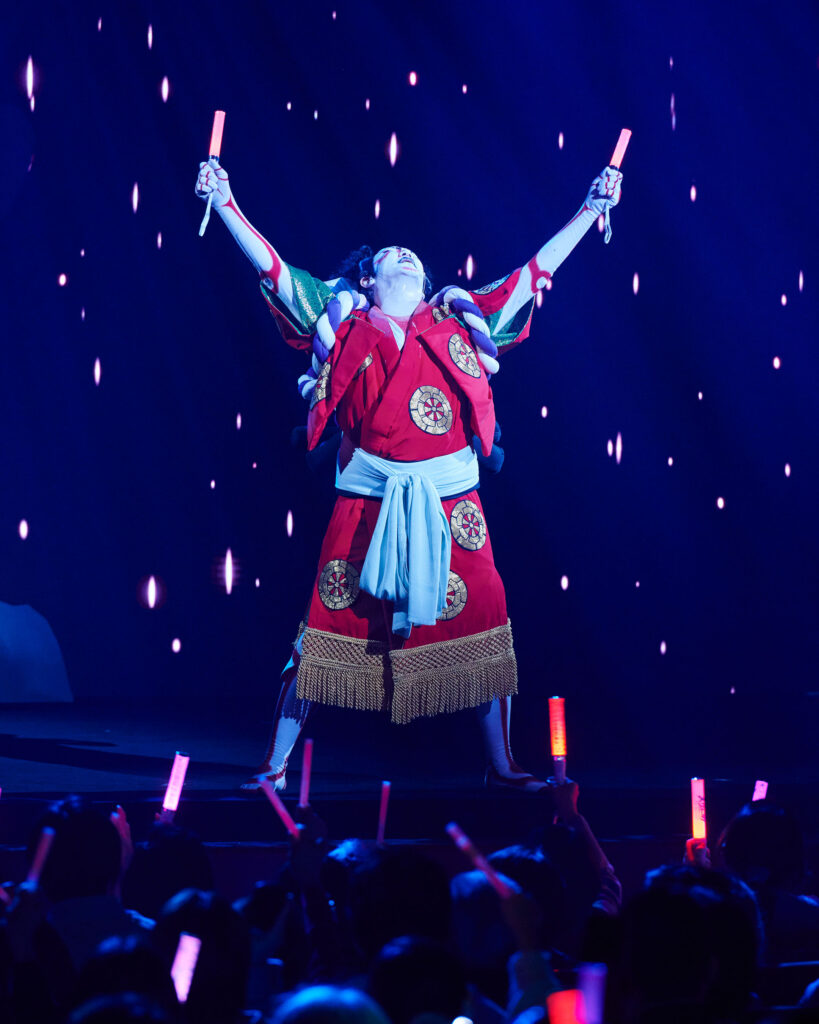
Cho Kabuki Powered by NTT Hanakurabe Senbonzakura
■Related Article

Shidō Nakamura’s Rebellious Spirit Embodied in Cho Kabuki: Blending Tradition and Innovation for the Future -Part 1-



